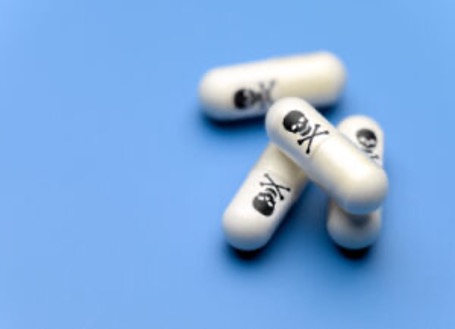FDA Grants Accelerated Approval to Brukinsa Plus Gazyva for Relapsed or Refractory Follicular Lymphoma
March 12, 2024
Source: drugdu
 362
362
Davy James
BeiGene’s Brukinsa is a small molecule Bruton’s tyrosine kinase inhibitor indicated as a monotherapy and in combination with other treatments for various B-cell malignancies.
 The FDA has granted accelerated approval to BeiGene’s Brukinsa (zanubrutinib) in combination with Roche’s Gazyva (obinutuzumab) for patients with relapsed or refractory follicular lymphoma (FL) following two or more lines of systemic therapy.1
The FDA has granted accelerated approval to BeiGene’s Brukinsa (zanubrutinib) in combination with Roche’s Gazyva (obinutuzumab) for patients with relapsed or refractory follicular lymphoma (FL) following two or more lines of systemic therapy.1
Brukinsa is a small molecule Bruton’s tyrosine kinase (BTK) inhibitor indicated as a monotherapy and in combination with other treatments for various B-cell malignancies, such as chronic lymphocytic leukemia (CLL) or small lymphocytic lymphoma; Waldenström’s macroglobulinemia; patients with mantle cell lymphoma (MCL) previously treated with at least one prior therapy; and patients with relapsed or refractory marginal zone lymphoma previously treated with at least one anti-CD20-based regimen.1 Gazyva is a CD20-directed cytolytic antibody indicated in combination with chlorambucil for the treatment of patients with previously untreated CLL; in combination with chemotherapy followed by Gazyva monotherapy in patients with stage II bulky, III, or IV FL; and combined with (Bendeka) bendamustine followed by Gazyva monotherapy for FL in adults who did not respond to a rituximab-containing regimen, or whose FL returned.3
“This accelerated approval of Brukinsa represents an important advancement, offering the first and only BTK inhibitor treatment for follicular lymphoma patients in the US who have either not responded to initial therapies or have experienced relapse,” Mehrdad Mobasher, MD, MPH, chief medical officer, Hematology at BeiGene, said in a press release. “Brukinsa is the only BTK inhibitor to date that shows efficacy with this type of malignancy and now has the broadest label, including five oncology indications, of any medication in its class globally. This is a testament to Brukinsa’s differentiated clinical profile and our continued commitment to bringing this much-needed treatment option to patients around the world.”1
The FDA based the accelerated approval on findings from the global, randomized, open-label Phase II ROSEWOOD trial (NCT03332017). Investigators enrolled patients with grade 1 to 3a relapsed/refractory FL previously administered at least two lines of therapy, including an anti-CD20 antibody and an alkylating agent. Patients were randomly assigned 2:1 to receive oral Brukinsa at 160 mg twice daily plus Gazyva or Gazyva monotherapy. Gazyva was administered at 1000 mg to both cohorts on days one, eight, and 15 of cycle one, then on day one of cycles two to six, and then once every eight weeks up to a maximum of 20 doses.
The trial’s primary endpoint was overall response rate (ORR) per independent review committee (IRC) assessment, with secondary endpoints of IRC-assessed duration of response (DOR), progression-free survival (PFS), overall survival (OS), time to next treatment, and safety.
At a median follow-up of 20.2 months, the Brukinsa combination produced an ORR of 69% (n = 145) compared with 46% in the Gazyva monotherapy cohort (n = 72). The complete response rate in the Brukinsa combination cohort was 39.3% compared with 19.4% in the Gazyva monotherapy cohort. DOR was 69% at the 18-month landmark in the Brukinsa combination cohort.1
Median PFS was 28.0 months in the Brukinsa combination cohort compared with 10.4 months with Gazyva monotherapy. Median OS was not evaluable with the combination compared to 34.6 months the monotherapy cohort, with 24-month OS rates of 77.3% for the Brukinsa combination vs. 71.4% for Gazyva monotherapy.4
In terms of safety, the most common treatment-emergent adverse effects were diarrhea (Brukinsa/Gazyva, 18.2%; Gazyva, 16.9%), fatigue (15.4%; 14.1%), pyrexia (13.3%; 19.7%), constipation (13.3%; 8.5%), cough (12.6%; 12.7%), asthenia (11.9%; 8.5%), pneumonia (11.9%; 7%), dyspnea (11.2%; 9.9%), back pain (11.5%; 5.6%), COVID-19 (9.8%; 9.9%), nausea (9.1%; 14.1%), abdominal pain (7.7%; 11.3%), pruritis (7%; 9.9%), and infusion-related reaction (2.8%; 9.9%).4
Read more on
- Multiple batches of quadrivalent influenza virus split vaccine have been sub-packaged and submitted for lot release approval; expected to be released to the market soon after approval December 12, 2025
- Ab&B Bio-Tech CO., LTD. JS Lyophilized Human Rabies Vaccine Initiates Phase III Clinical Trials December 12, 2025
- The ‘Sweetest’ HPV Vaccine Market is Gone | Haibin Interview December 12, 2025
- InnoCare Pharma announced that its first independently developed next-generation TRK inhibitor, zoletrazinib, has been approved for marketing in China December 12, 2025
- Is PD-1/VEGF dual antibody + ADC becoming the standard configuration? December 12, 2025
your submission has already been received.
OK
Subscribe
Please enter a valid Email address!
Submit
The most relevant industry news & insight will be sent to you every two weeks.



